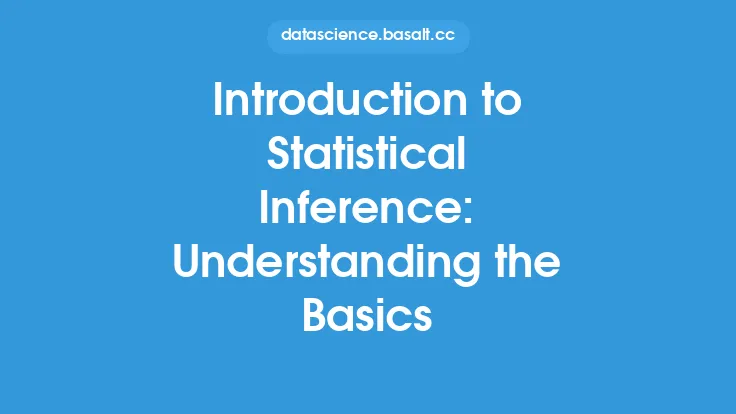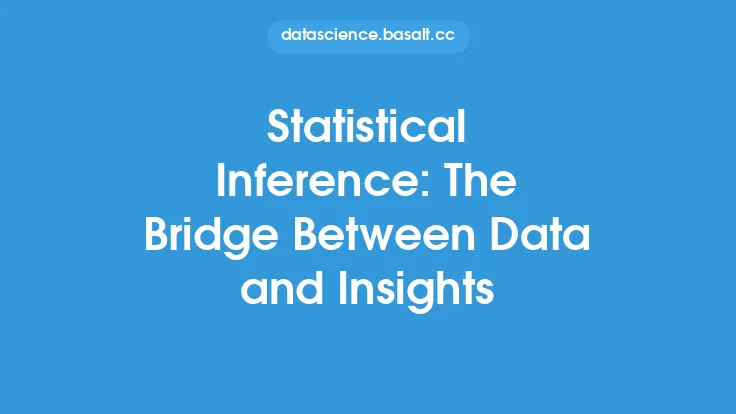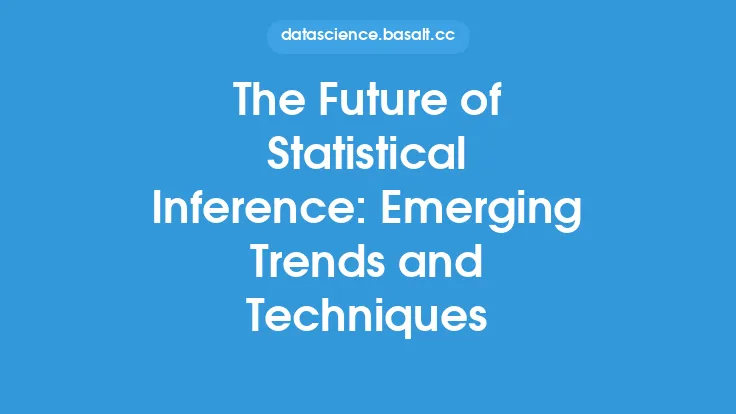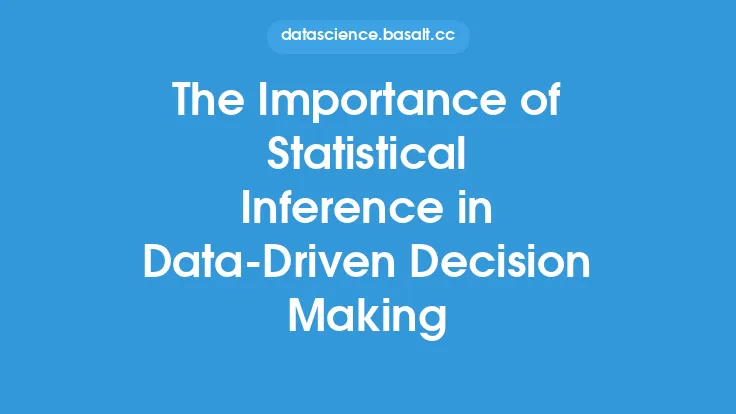Statistical inference is a crucial aspect of statistics that involves making conclusions or predictions about a population based on a sample of data. It is a fundamental concept in statistics that enables researchers and data analysts to extract insights from data and make informed decisions. At its core, statistical inference is about using probability theory and statistical methods to infer properties of a population from a sample of data. This involves using statistical techniques such as hypothesis testing, confidence intervals, and regression analysis to analyze the data and make inferences about the population.
Introduction to Statistical Inference Concepts
Statistical inference concepts are built on the foundation of probability theory and statistical methods. The key concepts in statistical inference include probability distributions, sampling distributions, and statistical models. Probability distributions describe the probability of different values or ranges of values for a random variable, while sampling distributions describe the probability of different sample statistics. Statistical models, on the other hand, describe the relationship between variables and are used to make predictions or inferences about the population. Understanding these concepts is essential for applying statistical inference techniques to real-world problems.
Types of Statistical Inference
There are several types of statistical inference, including estimation, hypothesis testing, and confidence intervals. Estimation involves using sample data to estimate the value of a population parameter, such as the mean or proportion. Hypothesis testing, on the other hand, involves testing a hypothesis about a population parameter based on sample data. Confidence intervals provide a range of values within which a population parameter is likely to lie. Each of these types of statistical inference has its own strengths and limitations, and the choice of which one to use depends on the research question and the nature of the data.
Statistical Models and Assumptions
Statistical models are a crucial component of statistical inference, as they provide a framework for making predictions or inferences about the population. Common statistical models include linear regression, logistic regression, and time series models. However, statistical models rely on certain assumptions, such as linearity, independence, and homoscedasticity. If these assumptions are not met, the results of the statistical inference may be biased or incorrect. Therefore, it is essential to check the assumptions of the statistical model before applying it to the data.
Sampling Distributions and the Central Limit Theorem
Sampling distributions are a fundamental concept in statistical inference, as they describe the probability of different sample statistics. The central limit theorem (CLT) states that the sampling distribution of the sample mean will be approximately normally distributed, regardless of the shape of the population distribution. This theorem is a powerful tool in statistical inference, as it allows researchers to make inferences about the population mean based on the sample mean. However, the CLT only applies when the sample size is sufficiently large, and the population distribution is not heavily skewed.
Hypothesis Testing and Confidence Intervals
Hypothesis testing and confidence intervals are two of the most commonly used statistical inference techniques. Hypothesis testing involves testing a null hypothesis about a population parameter, while confidence intervals provide a range of values within which the population parameter is likely to lie. Both of these techniques rely on the concept of a p-value, which is the probability of observing a sample statistic as extreme or more extreme than the one observed, assuming that the null hypothesis is true. If the p-value is below a certain significance level, the null hypothesis is rejected, and the alternative hypothesis is accepted.
Common Statistical Inference Techniques
There are several common statistical inference techniques, including t-tests, analysis of variance (ANOVA), and regression analysis. T-tests are used to compare the means of two groups, while ANOVA is used to compare the means of multiple groups. Regression analysis is used to model the relationship between a dependent variable and one or more independent variables. Each of these techniques has its own strengths and limitations, and the choice of which one to use depends on the research question and the nature of the data.
Interpreting Results and Avoiding Common Pitfalls
Interpreting the results of statistical inference techniques requires careful consideration of the research question, the data, and the statistical model. Common pitfalls include failing to check the assumptions of the statistical model, ignoring missing data or outliers, and misinterpreting the results of the statistical inference technique. Additionally, researchers should be aware of the limitations of statistical inference, including the risk of type I and type II errors. By being aware of these potential pitfalls, researchers can ensure that their results are accurate and reliable.
Conclusion and Future Directions
In conclusion, statistical inference is a powerful tool for making conclusions or predictions about a population based on a sample of data. By understanding the fundamentals of statistical inference, including probability distributions, sampling distributions, and statistical models, researchers can apply statistical inference techniques to real-world problems. However, it is essential to be aware of the limitations and potential pitfalls of statistical inference, including the risk of type I and type II errors. As statistical inference continues to evolve, new techniques and methods are being developed, including machine learning and artificial intelligence. By staying up-to-date with these developments, researchers can ensure that their results are accurate, reliable, and informative.





